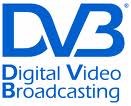 Introduction to DVB Standards: A consortium was formed in 1991 by broadcasters, telecom vendors & operators, and regulatory bodies (mainly European) to establish a standard for digital TV / Video Broadcast. This committee is responsible for DVB standards development. It finalizes these standards and then submits them to ETSI (European Telecom Standards Institute) for publication.
Introduction to DVB Standards: A consortium was formed in 1991 by broadcasters, telecom vendors & operators, and regulatory bodies (mainly European) to establish a standard for digital TV / Video Broadcast. This committee is responsible for DVB standards development. It finalizes these standards and then submits them to ETSI (European Telecom Standards Institute) for publication.
The DVB importance is increasing day by day as traditional analogue TV broadcast will eventually be switched off worldwide (e.g. 2012 in UK).
DVB standards are open standards, are easily adoptable and hence carry lower development costs as well as provide a uniform open platform.
The Key Standards:
DVB-S: TV Broadcast through Satellite Networks,
DVB-C: TV broadcast via Cable Networks
DVB-T: Broadcast via Terrestrial Networks.
DVB-H: For broadcast to Handhelds i.e. for mobile TV. It is compatible with DVB-T (i.e. share the same terrestrial spectrum)
DVB-IPTV: For TV via an IP network e.g. internet.
DVB-SH: It is the Latest, & designed to deliver video, audio and data to handheld devices using S-band frequencies. It is a hybrid satellite/terrestrial system that allows the use of a satellite to achieve coverage of large regions e.g. a whole country. In areas where direct reception of the satellite signal is not possible, terrestrial gap filler can be used to provide coverage. It is designed to use frequencies below 3GHz, typically around 2.2GHz. ETSI standards (TS 102 585 and EN 302 583) cover this.
For more on DVB, look at fact sheets: www.dvb.org/technology/fact_sheets/index.xml
MBMS (Multi Broadcast Multicast Service): Another serious contender in mobile TV delivery is MBMS. It makes use of the existing GSM / UMTS infrastructure, opposed to DVB which uses different radio spectrum hence requiring additional radio spectrum as well as network infrastructure to handle it.
Another issue is DVB is based on terrestrial TV broadcast mechanism which is only downlink, hence it is much complicated to implement signaling or acknowledgements from handheld to transmitter (i.e. uplink). MBMS does not have this issue. MBMS has been adopted by the 3GPP.
Huawei (solution provider), Qualcomm (handheld provider) & Telecom Italia (network operator) announced the completion of Europe’s first MBMS field trial in April 08.
Some other less commonly used technologies include:
ISDB-T: Japan
S-DMB: Japan
FLO: USA
The end of Document.